Women's Place in the Art World
Female Artists Represent Just 2 Percent of the Market. Here’s Why—and How That Can Change
The market for work by women doubled over the past decade. But it’s still less than the total sales for Picasso alone.
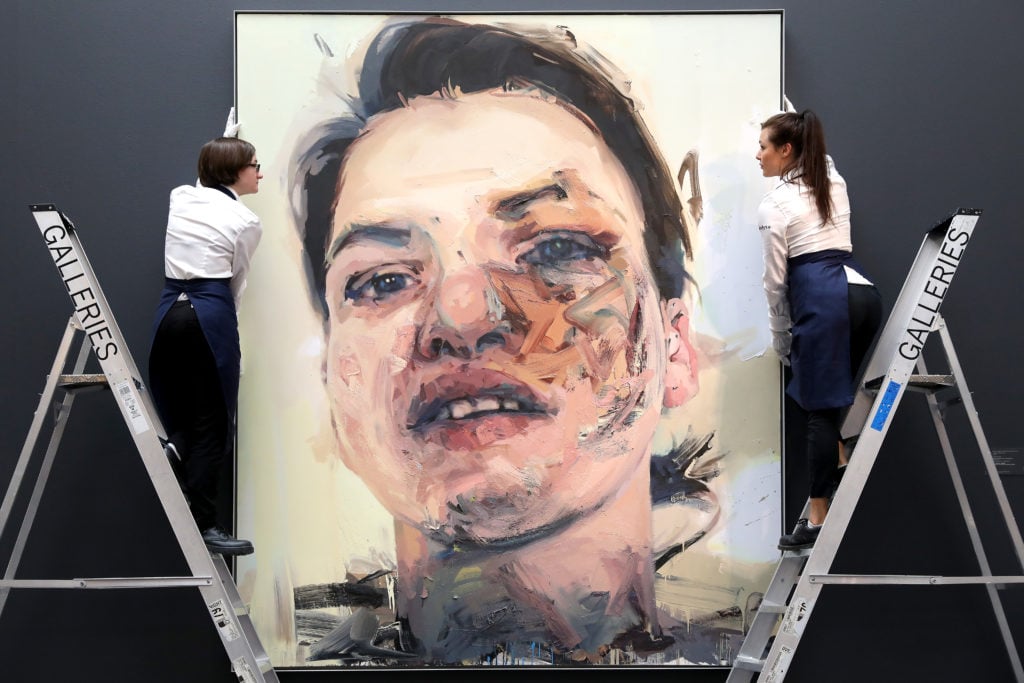
The market for work by women doubled over the past decade. But it’s still less than the total sales for Picasso alone.

Julia Halperin &
Charlotte Burns


When a female artist made auction history last October, a man nonetheless managed to steal the limelight. Five bidders had vigorously pursued British artist Jenny Saville’s 1992 painting of a fleshy female nude, at Sotheby’s, pushing the price to £9.5 million with fees ($12.5 million) and setting a world record for a living female artist. Yet attention was swiftly diverted when onlookers noticed that the final lot of the evening, Banksy’s Girl With Balloon (2006), had suddenly begun to shred itself. By the following morning, the self-destructing Banksy was international news, while Saville was a historical footnote.
With or without fanfare, the sum paid for Propped was still less than 14 percent of the record for a living male artist at auction: $91.1 million for Jeff Koons’s Rabbit (1986), set last May at Christie’s.
Such disparity is the rule, not the exception. According to a joint investigation by In Other Words and artnet News—which together gathered and analyzed data from international auctions, leading galleries and the Art Basel fair—it is clear that the art market overwhelmingly finds greater value in work produced by men than that made by women.
More than $196.6 billion has been spent on art at auction between 2008 and the first five months of 2019. Of this, work made by women accounts for just $4 billion—around 2 percent. For context, works by Pablo Picasso generated $4.8 billion at auction during the same period, more than the total spent on every single female artist in our data set combined—almost 6,000 women.
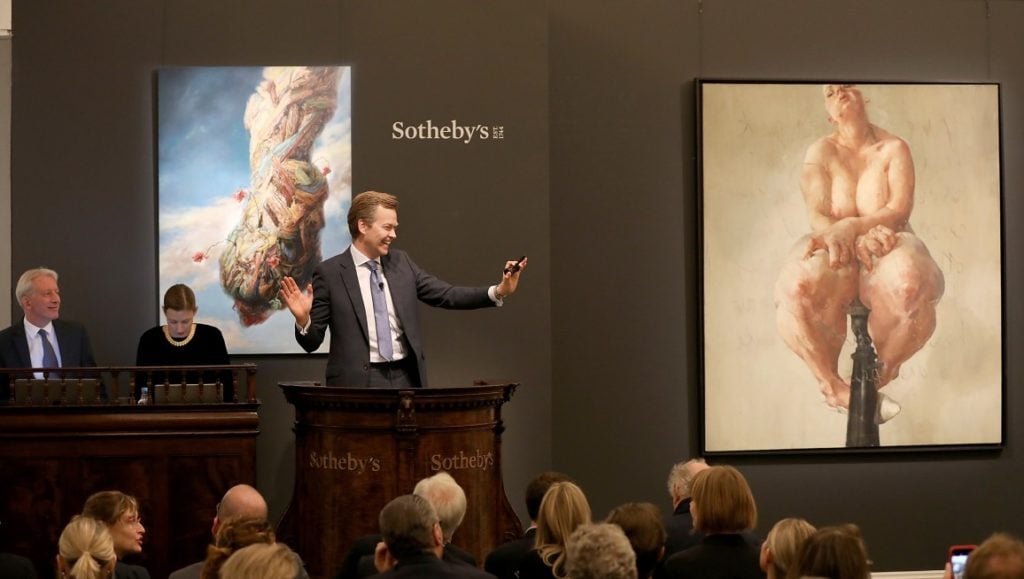
Jenny Saville’s Propped led the Sotheby’s London auction in October 2018. Image courtesy Sotheby’s.
Artists themselves are painfully aware of these discrepancies. “I know the world is the way it’s shown to be in your numbers,” says photographer Catherine Opie, who is in the top 25 female artists collected by US museums, according to our data. “I have done well in my career but, at the same time, there is no comparison with my male counterparts. The men do so much better than I do because they rule the roost in relationship to capitalism. They are still the default go-to for collecting by museums and the market.”
The market for art by women is not only smaller, it is also disproportionately concentrated on a few artists. Just five account for $1.6 billion of the $4 billion total spent on work by women over the past 11.5 years. That 40.7 percent market share was split between, in descending order, Yayoi Kusama, Joan Mitchell, Louise Bourgeois, Georgia O’Keeffe, and Agnes Martin.
By contrast, sales are distributed far more equitably among male artists. The top five (Pablo Picasso, Andy Warhol, Zhang Daqian, Qi Baishi, and Claude Monet) account for just under a tenth (8.7 percent) of the total $192.6 billion spent on work by men at auction since 2008.
“The numbers are devastating,” says Hauser & Wirth vice-president and partner Marc Payot. “We think we are going in the right direction, but the perception has changed more than the reality. If you take away the top five female artists, in essence, nothing has changed.”
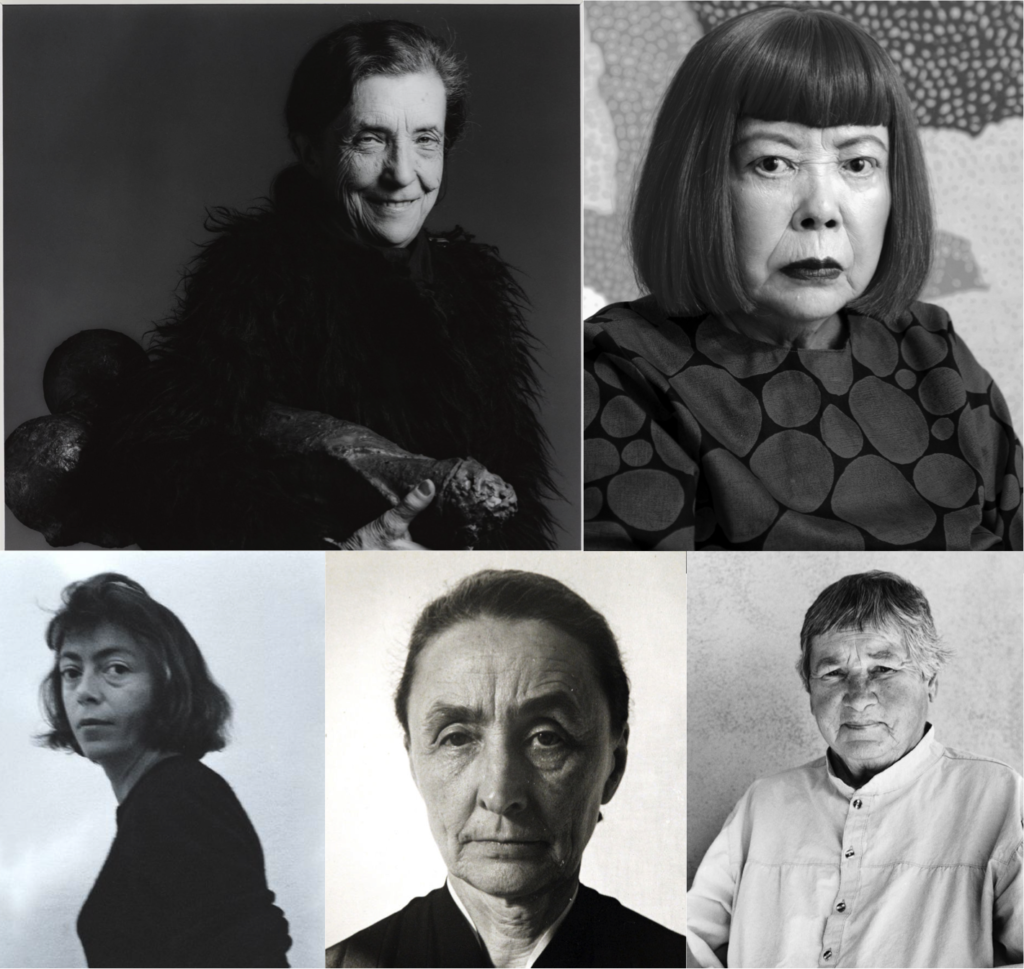
Clockwise: Louise Bourgeois, Yayoi Kusama, Joan Mitchell, Georgia O’Keeffe, Agnes Martin. Composite © artnet News, courtesy Getty Images.
Buyers are still reluctant to pay high prices for work by female artists, says Marina Gertsberg, a visiting research scholar at Yale University’s School of Management. Furthermore, she says, what is known as the “superstar effect”—whereby a small number of elite artists generate a disproportionate amount of the profits—is “even stronger for minorities like female artists or African American artists. Within those groups, competition is even greater because those minorities are competing even more for the few spots on top.”
The disparity is particularly flagrant when one considers the impact female artists have had on male artists—and, indeed, the entire history of art. Allan Schwartzman, chairman of Sotheby’s Fine Art Division, notes that the work of female artists, particularly those active during the women’s movement of the 1960s and ’70s, changed the language of art. “Before the women’s movement,” he says, postwar American art “couldn’t be psychologically vulnerable, personal, diaristic, fragile, tender, self-revealing, small, colorful, eccentric, handmade. Since then, much of the most valued contemporary art is many of these things.”
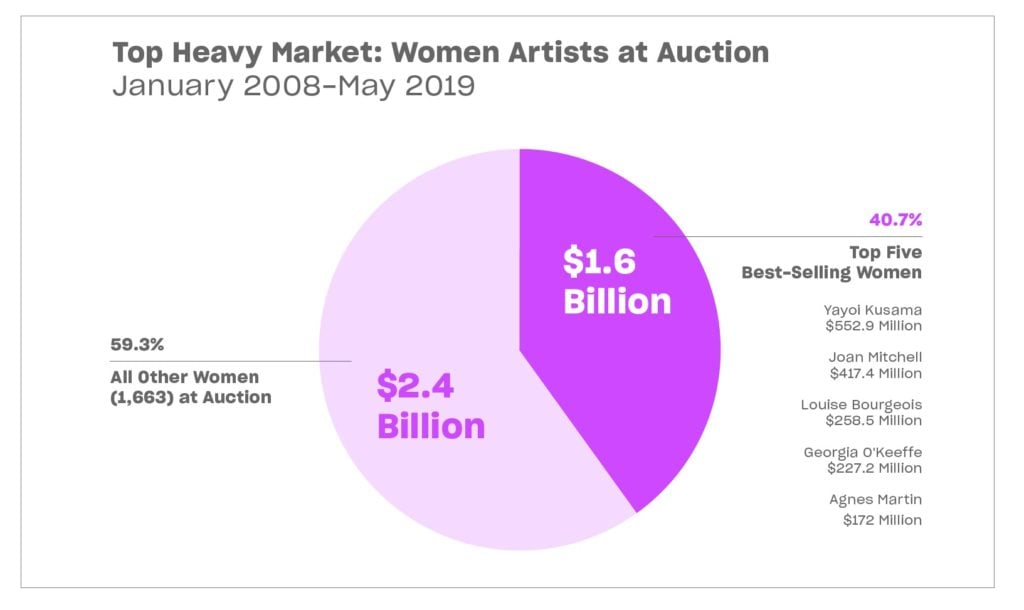
Courtesy of artnet News and In Other Words at Art Agency, Partners.
Schwartzman adds that “even the most muscular of male artists of these decades, like Richard Serra, openly acknowledge the vast impact of women artists on their own work. This is one of the great unspoken hypocrisies of the art market. And one of its silliest oversights.”
Galleries also bear responsibility for correcting these biases. “There is a structural issue in that galleries don’t represent enough women in their programs. You need to educate collectors,” Payot says. “You need to confront them with quality.”
We surveyed some of the leading galleries about the number of female artists they represent and the proportion of sales those artists bring in. The figures were significantly ahead of auction results—though not anywhere near parity.
“These are important artists of the 20th century, and collectors are realizing that if they don’t have the right painting in their collection they’re not telling the story properly,” says Bellatrix Hubert, senior partner at David Zwirner. The gallery’s 66-artist roster is 29 percent female (19 out of 66), but those women (including market heavyweights Yayoi Kusama and Joan Mitchell—both in the auction top five—as well as Marlene Dumas, whose market ranks 13th among the best-selling female artists at auction) account for 39 percent of the gallery’s total sales.
At the international galleries Pace and Lisson, female artists and estates bring in a disproportionate amount of revenue: almost a quarter of the artists at Pace are female (21 percent or 19 out of 92, including Agnes Martin—the fifth best performing female artist at auction), but they account for more than a third (39 percent) of overall sales. A fifth of Lisson’s artists are female (20 percent or 13 of 65 artists, including Marina Abramović and Carmen Herrera), and they account for around a third of all sales, the gallery estimates.
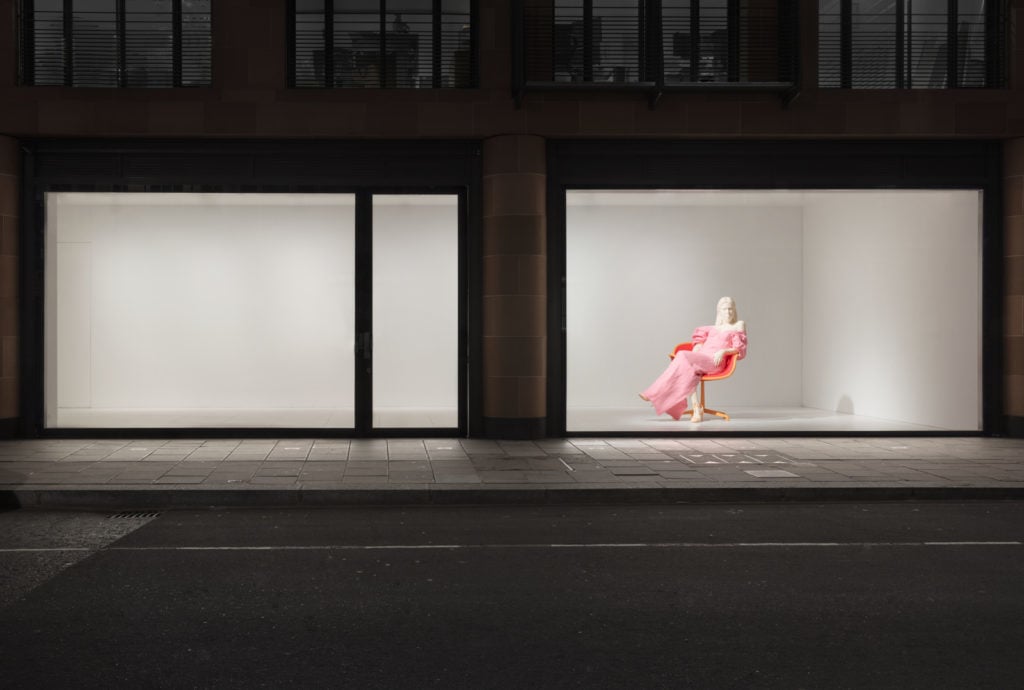
Urs Fischer’s Dasha (2018). Photo: Stefan Altenburger, courtesy the artist and Gagosian.
Of the 88 artists and estates represented by Hauser & Wirth, 30 are female (34 percent) and they account for 33 percent of the gallery’s sales, Payot says. Representing female artists is in the gallery’s DNA, partly a function of the interests of its co-founder, Ursula Hauser, and partly borne of necessity. Now one of the world’s leading dealers, with locations around the globe, Hauser & Wirth began “operating out of an off-place, marketwise, in Zürich, so to get access to fantastic art wasn’t that easy,” he says. “But women were under-represented and undervalued in the market, so for us it was an opportunity.”
Artist Micol Hebron, who has tracked the representation of women on gallery rosters since 2013, points out that many galleries that profess to promote equality still fall short: “A 65-35 ratio is repeated over and over—that’s still almost twice as many men as women,” she says.
At the Art Basel fairs, the leading industry events that take place annually in Basel, Miami, and Hong Kong, the numbers are even lower. Women made up less than a quarter of the artists on view at these fairs over the past four years, according to an analysis of the lists that galleries submitted of the artists they planned to bring.
The under-representation in galleries and art fairs has an impact on the long-term prospects of women’s markets: if they sell fewer works on the primary market, then their secondary markets will necessarily be inhibited.
Bias is built into the way works are priced. The value of a work of art is usually decided by drawing a comparison with artists from similar eras or schools. But in market transactions, women artists are siloed. While men are compared with other artists that have similar profiles and trajectories, some market players say it is common practice to compare women only with each other. “We always go to female artists as opposed to an artist who has a similar trajectory,” Hubert says. “We tend to create the comparisons but limit the possibilities from the get-go. Everyone does this. We really need to stop.”
These kinds of prejudices are built into the system, and often go unnoticed. “I don’t think people are even conscious of the bias, they just accept it,” says Mary Sabbatino, partner at Galerie Lelong. She says her career has been shaped by the fact that she has chosen to champion artists on the margins. “I knew it was going to be a lot more difficult than if I had developed an expertise in mid-century heroes, but I’ve worked so long in this area that it seems quite normal to me to encounter resistance. It doesn’t discourage me to hear some unconscious misogyny or disrespect,” she says. On the contrary, “there is a deep satisfaction when an artist who has been under-recognized takes center stage. There is no revenge like success.”
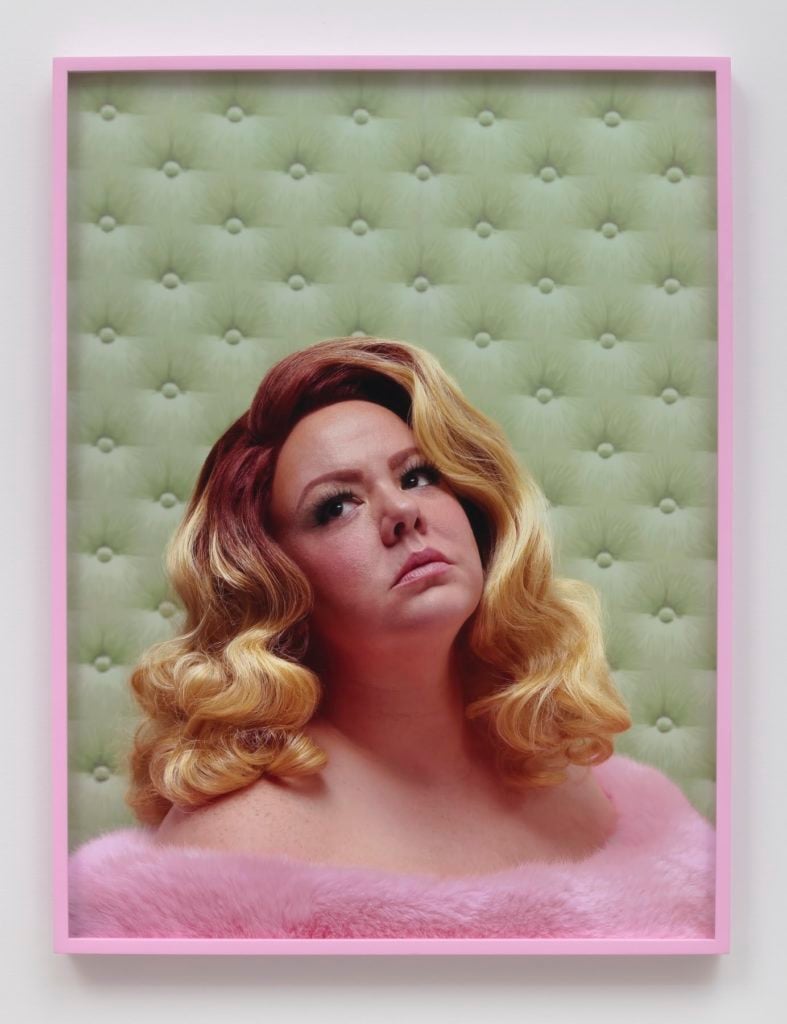
Genevieve Gaignard, Ladybirds (I’m a Canary), (2019). Courtesy the artist and Vielmetter Los Angeles. Photo: Robert Wedemeyer.
Such outright sexism has not been limited to artists. Lisa Dennison, the chairman of Sotheby’s Americas and a former director of the Guggenheim, points to generations of female curators who “didn’t fight for female artists because they were just happy to be curators in major museums—usually under male bosses.” She notes that the great female gallerists who emerged during the 1980s and ’90s did not fight to build stables of women artists, either. “They had to prove they could hold their own against the male dealers,” she says.
The 2000s were not much better. LA gallerist Susanne Vielmetter founded her business at the start of the new millennium and says that, for the first decade, “You couldn’t tell a collector that you counted the number of female artists in museum shows or in your gallery program. People would think you either had some kind of early childhood trauma—that there was something psychologically damaged about you—or that you were so hopelessly stuck in the 1990s identity-politics era that you simply couldn’t be helped,” she says. “At least we are having the conversation now.”
Dealers, collectors, and others cite many reasons why the market for work by women remains disproportionately small: there were fewer female than male artists working until the 20th century; women have made art that is less easily commodified than that made by men; there is less research published on the work of women, which makes it more difficult to create value around them.
But there is also ample evidence of an even simpler explanation: bias. Academic studies have found larger price gaps between male and female artists in countries in which there is more gender inequality. The correlation “suggests that it’s not the quality of the art that matters,” says Renée Adams, a professor of finance at Oxford University. “It’s discrimination.”
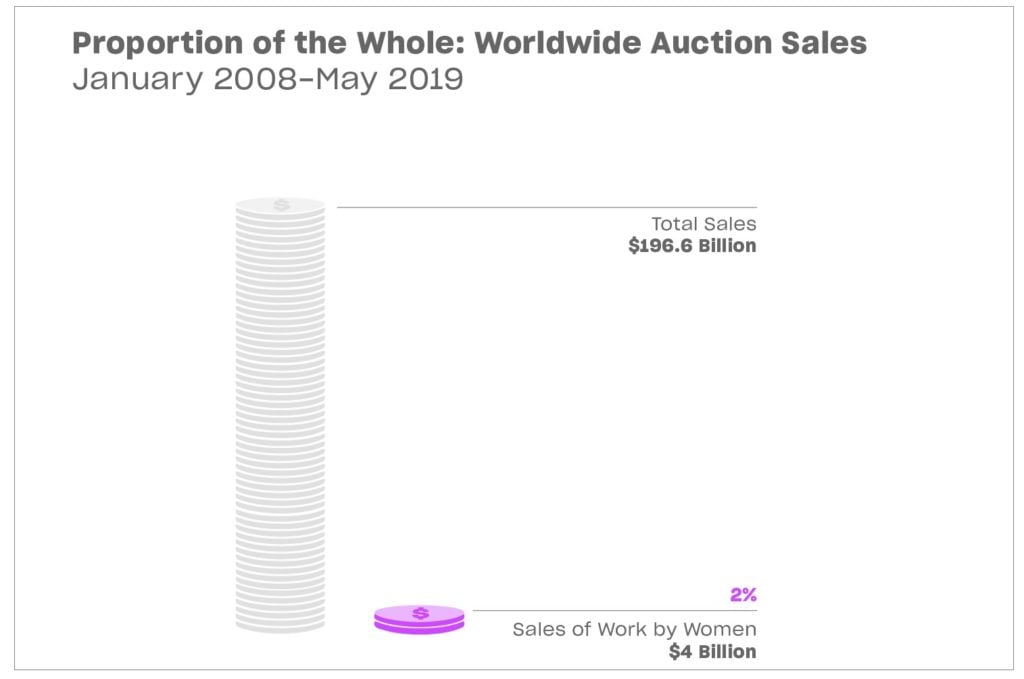
Courtesy of artnet News and In Other Words at Art Agency, Partners.
Our cultural understanding of what artistic genius looks like is still overwhelmingly male.
This belief system was evident in a study Adams conducted in 2017, which found that wealthy men in particular tend to have a lower regard for art by women. She asked 2,000 participants to rate computer-generated paintings that were randomly assigned fictitious male and female names. Wealthy men—especially those who said they visit an art gallery at least a few times a year, and therefore were more likely to collect art—consistently rated works with female names lower than the rest.
These prejudices absolutely “become self-reinforcing,” according to New York gallerist Alexander Gray, who says the situation is exacerbated at high-stakes art fairs. Dealers are more likely to place lower-priced work by female artists further back in their booths or inside closets rather than on the most visible “money walls.” The calculation is: “That wall cost $100,000, so I need to make $300,000 back,” Gray says.
All hope is not lost. Although it remains a tiny slice of the whole, the market for work by women is experiencing an upward trend, more than doubling from $230 million to $595 million in the decade since 2008. That’s a rate of growth faster than the art market as a whole, which increased by 72 percent over the same period.
Data suggests this shift is taking hold in some parts of the world more quickly than others. Notably, the only Art Basel fair to have consistently grown the proportion of female artists on view over the past four years is the Hong Kong event, which went from 21.1 percent women artists in 2015 to 26.5 percent last year. Both the Swiss and US fairs peaked in 2017 before dropping last year to around a quarter each, falling behind the Asian city.
Perhaps not coincidentally, China is home to more than half the world’s female self-made billionaires. The fact that women now have their own independent sources of money is a historical anomaly—one that could go on to shape the market. “The notion that a female collector can walk into a gallery and spend $200,000 on a work for her collection is radically new,” Vielmetter says. “Thirty or 40 years ago, female collectors were either married to wealthy men or inherited money from their dads. The notion that you could be a wealthy CEO and have enough dough to spend on art was unimaginable.”
This is beginning to create subtle shifts in the dynamic. “I have had more collectors telling me they are only collecting women artists than ever before,” says Joeonna Bellorado-Samuels, a director at Jack Shainman Gallery. “It’s only three or four instances, so not exactly a wave, but five or eight years ago I would never had heard of people actively trying to build collections just with women artists—and in some instances women of color.”
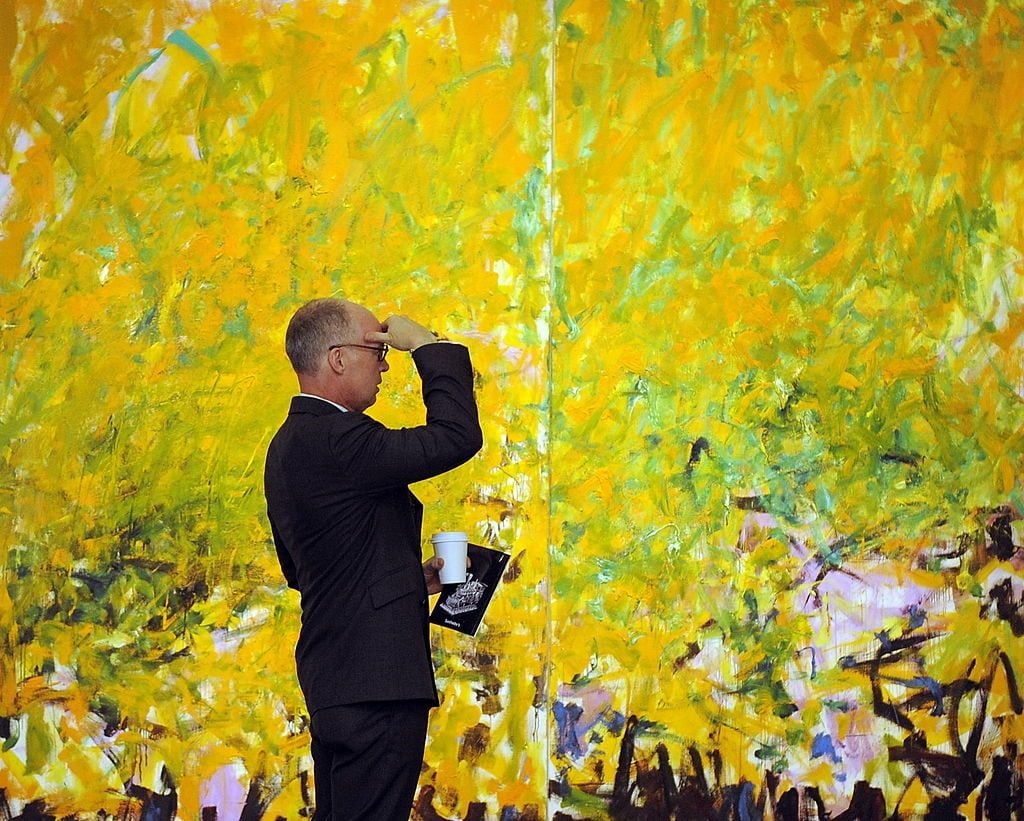
Joan Mitchell’s “Two Sunflowers” at Sotheby’s New York. Photo: Timothy A. Clary/AFP/Getty Images.
There are also signs that the market value for work by women will continue to grow significantly in the near future. Recent data commissioned by In Other Words from Sotheby’s Mei Moses index, which tracks the art market through repeat sales of objects at auction, reveals that work by women is outperforming that by men when it returns to the auction block. According to the findings, prices for female artists’ work that sold at auction more than once over the past six years increased by 72.9 percent, compared to a much more modest 8.3 percent for repeat sales by male artists.
This marks a change from the previous 50 years, when resale markets for both performed roughly in parallel (albeit at different volumes). The findings show deepening auction traction for work by women, especially those who have received some commercial validation in the past. But, as Amy Cappellazzo, chairman of Sotheby’s Fine Arts Division, says, “It would be much better for female artists to trend at 9 percent and have many more artists in that trending pool.”
Like any overlooked area of the market, art by women represents an opportunity. “Our research suggests that you can get high-quality art at a bargain price,” says William Goetzmann, a finance professor at the Yale School of Management. “Now is a great time to be rebalancing your collection.”
In recent years, the art world has witnessed an “incredible herding around a few female artists because collectors and museums have been very conservative, playing follow-the-leader as if it is a big popularity contest,” Goetzmann says. But he believes that some enterprising players are bound to break the mold soon: “And then there is going to be a gold rush because some wonderful art and phenomenal artists have been neglected.”
None of this is likely to happen, however, until more equity is given to women (or taken by them). Asked whether she feels women have more seats at the table today than they did a decade ago, Dennison laughs: “Not the tables I’m sitting at.” The fundamental balance of power has yet to radically shift. As Vielmetter points out: “You can have moral conversations about the market but first of all we need to be able to sit at the big table with the big guys and eat that cake too. Then we can talk about what we want to do next.”
This story is part of a research project on the presence of work by female artists in museums and the market over the past decade. For more, see our examination of museums; four case studies on museums making change; visualizations of our findings; our investigation into maternity leave in the art world; art-world reactions to the data; and our methodology.
Research by Julia Vennitti.